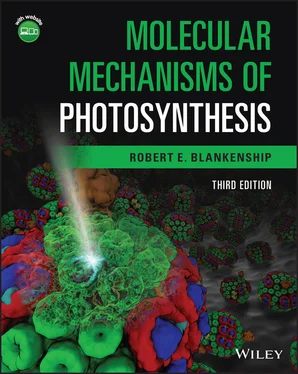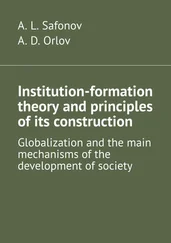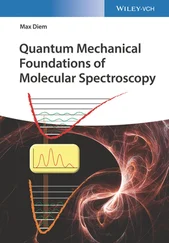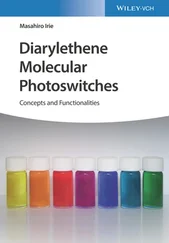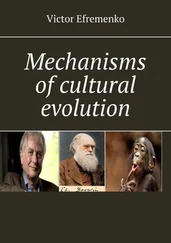1 Cover
2 Title Page
3 Copyright Page
4 Dedication Page
5 Introduction to the third edition
6 Acknowledgements
7 About the companion website
8 Chapter 1: The basic principles of photosynthetic energy storage1.1 What is photosynthesis? 1.2 Photosynthesis is a solar energy storage process 1.3 Where photosynthesis takes place 1.4 The four phases of energy storage in photosynthesis References
9 Chapter 2: Photosynthetic organisms and organelles2.1 Introduction 2.2 Classification of life 2.3 Prokaryotes and eukaryotes 2.4 Metabolic patterns among living things 2.5 Phototrophic prokaryotes 2.6 Photosynthetic eukaryotes References
10 Chapter 3: History and early development of photosynthesis 3.1 Van Helmont and the willow tree 3.2 Carl Scheele, Joseph Priestley, and the discovery of oxygen 3.3 Ingenhousz and the role of light in photosynthesis 3.4 Senebier and the role of carbon dioxide 3.5 De Saussure and the participation of water 3.6 The equation of photosynthesis 3.7 Early mechanistic ideas of photosynthesis 3.8 The Emerson and Arnold experiments 3.9 The controversy over the quantum requirement of photosynthesis 3.10 The red drop and the Emerson enhancement effect 3.11 Antagonistic effects 3.12 Early formulations of the Z scheme for photosynthesis 3.13 ATP formation 3.14 Carbon fixation References
11 Chapter 4: Photosynthetic pigments 4.1 Chemical structures and distribution of chlorophylls and bacteriochlorophylls 4.2 Pheophytins and bacteriopheophytins 4.3 Chlorophyll biosynthesis 4.4 Spectroscopic properties of chlorophylls 4.5 Carotenoids 4.6 Bilins References
12 Chapter 5: Antenna complexes and energy transfer processes5.1 General concepts of antennas and a bit of history 5.2 Why antennas? 5.3 Classes of antennas 5.4 Physical principles of antenna function 5.5 Structure and function of selected antenna complexes 5.6 Regulation of antennas References
13 Chapter 6: Reaction centers and electron transport pathways in anoxygenic phototrophs 6.1 Basic principles of reaction center structure and function 6.2 Development of the reaction center concept 6.3 Purple bacterial reaction centers 6.4 Theoretical analysis of biological electron transfer reactions 6.5 Quinone reductions, the role of the Fe and pathways of proton uptake 6.6 Organization of electron transfer pathways 6.7 Completing the cycle – the cytochrome bc 1complex 6.8 Membrane organization in purple bacteria 6.9 Electron transport in other anoxygenic phototrophic bacteria References
14 Chapter 7: Reaction centers and electron transfer pathways in oxygenic photosynthetic organisms 7.1 Spatial distribution of electron transport components in thylakoids of oxygenic photosynthetic organisms 7.2 Noncyclic electron flow in oxygenic organisms 7.3 Photosystem II overall electron transfer pathway 7.4 Photosystem II forms a dimeric supercomplex in the thylakoid membrane 7.5 The oxygen‐evolving complex and the mechanism of water oxidation by Photosystem II 7.6 The structure and function of the cytochrome b 6 f complex 7.7 Plastocyanin donates electrons to Photosystem I 7.8 Photosystem I structure and electron transfer pathway 7.9 Ferredoxin and ferredoxin‐NADP reductase complete the noncyclic electron transport chain References
15 Chapter 8: Chemiosmotic coupling and ATP synthesis 8.1 Chemical aspects of ATP and the phosphoanhydride bonds 8.2 Historical perspective on ATP synthesis 8.3 Quantitative formulationof proton motive force 8.4 Nomenclature and cellular location of ATP synthase 8.5 Structure of ATP synthase 8.6 The mechanism of chemiosmotic coupling References
16 Chapter 9: Carbon metabolism 9.1 The Calvin–Benson cycle is the primary photosynthetic carbon fixation pathway 9.2 Photorespiration is a wasteful competitive process to carboxylation 9.3 The C4 carbon cycle minimizes photorespiration 9.4 Crassulacean acid metabolism avoids water loss in plants 9.5 Algae and cyanobacteria actively concentrate CO 2 9.6 Sucrose and starch synthesis 9.7 Other carbon fixation pathways in anoxygenic phototrophs References
17 Chapter 10: Genetics, assembly, and regulation of photosynthetic systems 10.1 Gene organization in anoxygenic photosynthetic bacteria 10.2 Gene expression and regulation of purple photosynthetic bacteria 10.3 Gene organization in cyanobacteria 10.4 Chloroplast genomes 10.5 Pathways and mechanisms of protein import and targeting in chloroplasts 10.6 Gene regulation and the assembly of photosynthetic complexes in cyanobacteria and chloroplasts 10.7 The regulation of oligomeric protein stoichiometry 10.8 Assembly, photodamage, and repair of Photosystem II References
18 Chapter 11: The use of chlorophyll fluorescence to probe photosynthesis 11.1 The time course of chlorophyll fluorescence 11.2 The use of fluorescence to determine the quantum yield of Photosystem II 11.3 Fluorescence detection of nonphotochemical quenching 11.4 The physical basis of variable fluorescence References
19 Chapter 12: Origin and evolution of photosynthesis12.1 Introduction 12.2 Early history of the Earth 12.3 Origin and early evolution of life 12.4 Geological evidence for life and photosynthesis 12.5 The nature of the earliest photosynthetic systems 12.6 The origin and evolution of metabolic pathways with special reference to chlorophyll biosynthesis 12.7 Origin and evolution of photosynthetic pigments 12.8 Evolutionary relationships among reaction centers and other electron transport components 12.9 Do all photosynthetic reaction centers derive from a common ancestor? 12.10 The origin of linked photosystems and oxygen evolution 12.11 Origin of the oxygen‐evolving complex and the transition to oxygenic photosynthesis 12.12 Antenna systems have multiple evolutionary origins 12.13 Endosymbiosis and the origin of chloroplasts 12.14 Most types of algae are the result of secondary endosymbiosis 12.15 Following endosymbiosis, many genes were transferred to the nucleus, and proteins were reimported to the chloroplast 12.16 Evolution of carbon metabolism pathways References
20 Chapter 13: Bioenergy applications and artificial photosynthesis13.1 Introduction 13.2 Solar energy conversion 13.3 What is the efficiency of natural photosynthesis? 13.4 Calculation of the energy storage efficiency of oxygenic photosynthesis 13.5 Why is the efficiency of photosynthesis so low? 13.6 How might the efficiency of photosynthesis be improved? 13.7 Artificial photosynthesis References
21 Appendix 1: Light, energy, and kinetics A.1 Light A.2 Thermodynamics A.3 Boltzmann distribution A.4 Electrochemistry: reduction–oxidation reactions A.5 Chemical kinetics A.6 Quantum versus classical mechanics A.7 Quantum mechanics – the basic ideas A.8 Molecular energy levels and spectroscopy A.9 Practical aspects of spectroscopy A.10 Photochemistry References Further reading Further advanced reading
22 Index
23 End User License Agreement
1 Chapter 2 Table 2.1 Metabolic patterns in living organisms
2 Chapter 4 Table 4.1 Distribution of chlorophylls and bacteriochlorophylls Table 4.2 Spectroscopic properties of chlorophylls and bacteriochlorophylls in ...
3 Chapter 5Table 5.1 Classes of photosynthetic antennasTable 5.2 Förster R 0values for photosynthetic pigments
4 Chapter 7Table 7.1 Subunit structure of Photosystem IITable 7.2 Subunit structure of the cytochrome b 6 f complexTable 7.3 Subunit structure of Photosystem I
5 Chapter 8Table 8.1 Subunit structure of the ATP synthase complex of chloroplasts
6 Chapter 9Table 9.1 Chemical reactions of the Calvin–Benson cycle.Table 9.2 Enzymatic and physical parameters for rubisco.Table 9.3 Chemical reactions involved in photorespiration.Table 9.4 Chemical reactions involved in C4 and CAM photosynthesis.Table 9.5 Chemical reactions involved in starch and sucrose synthesis.
Читать дальше
